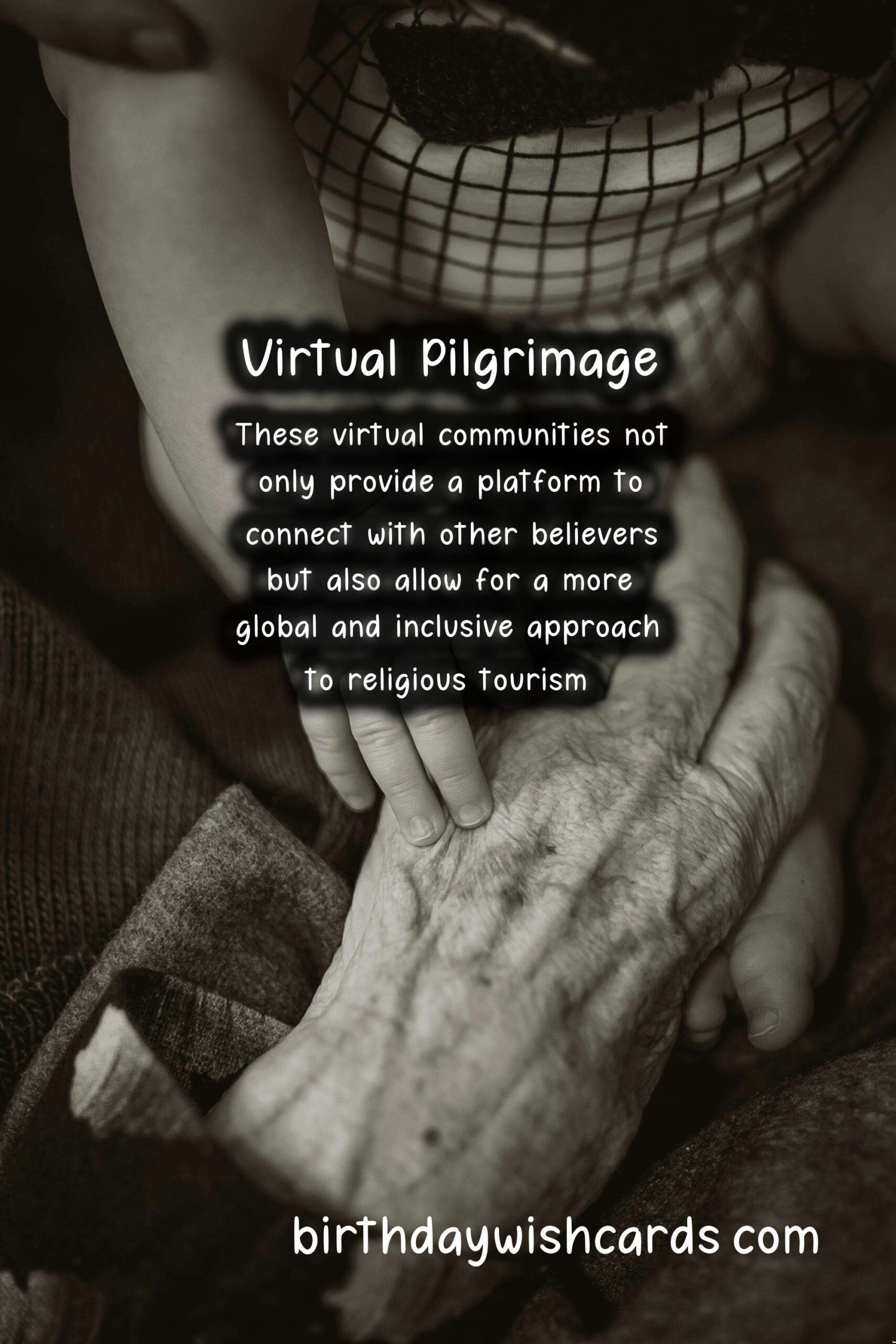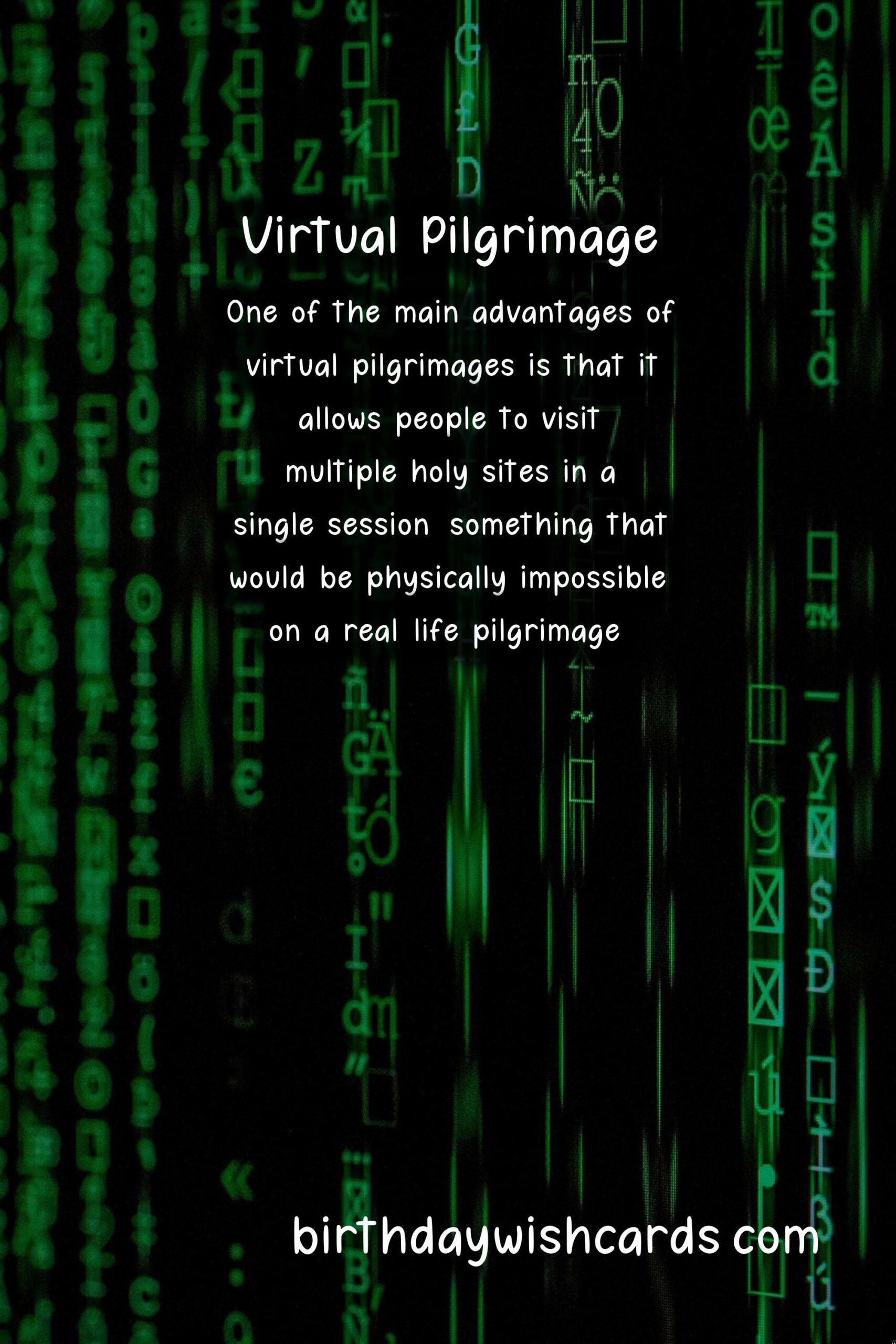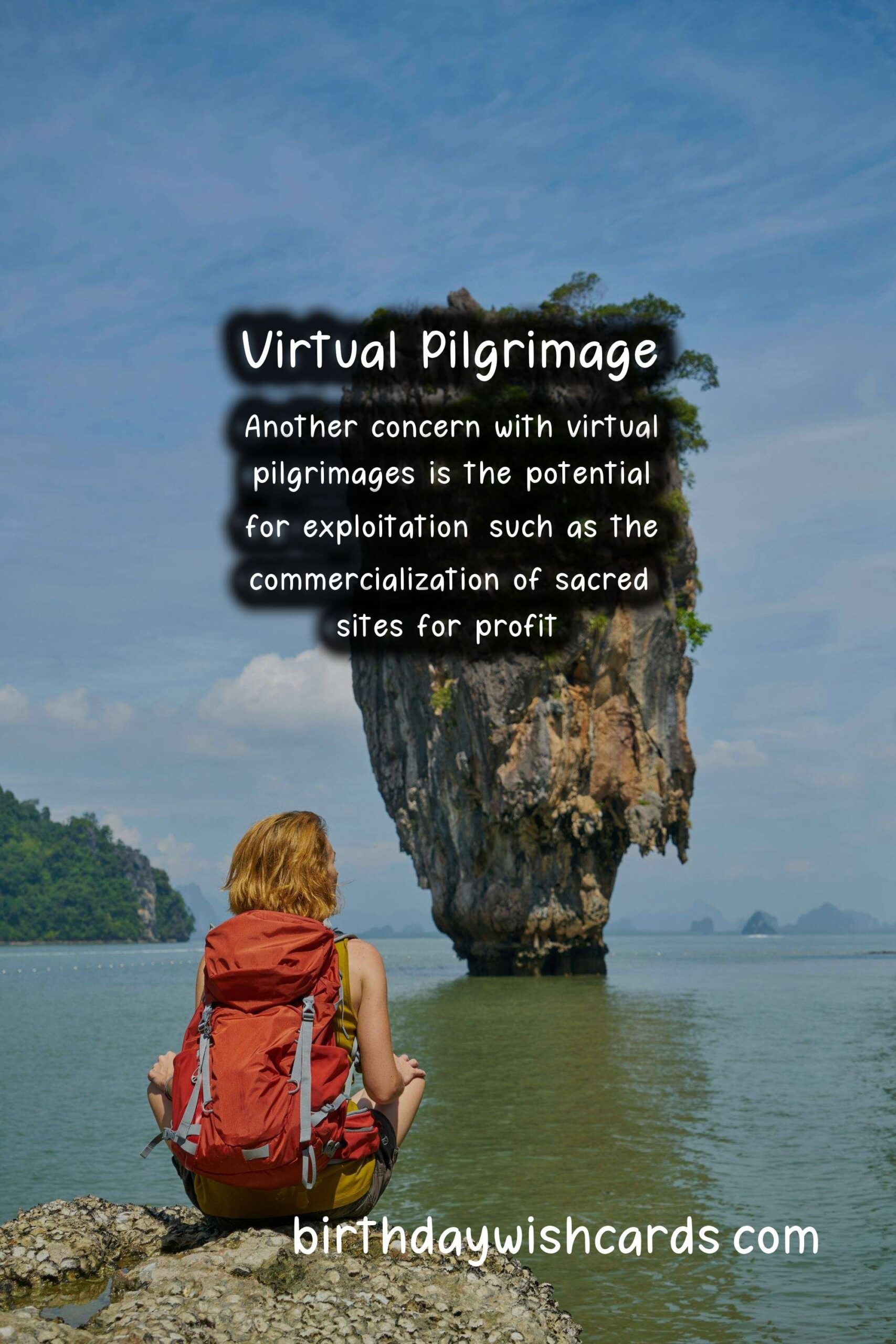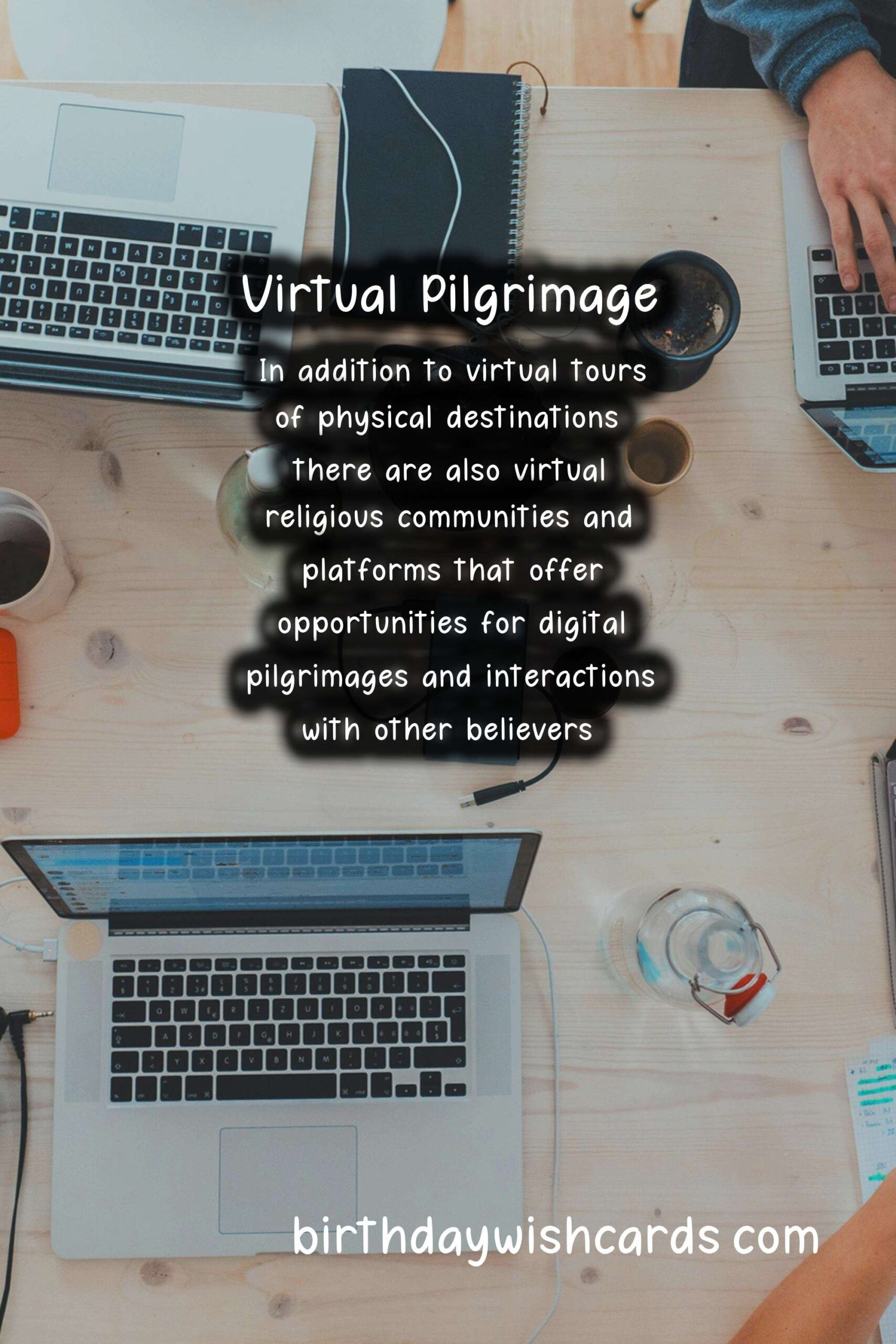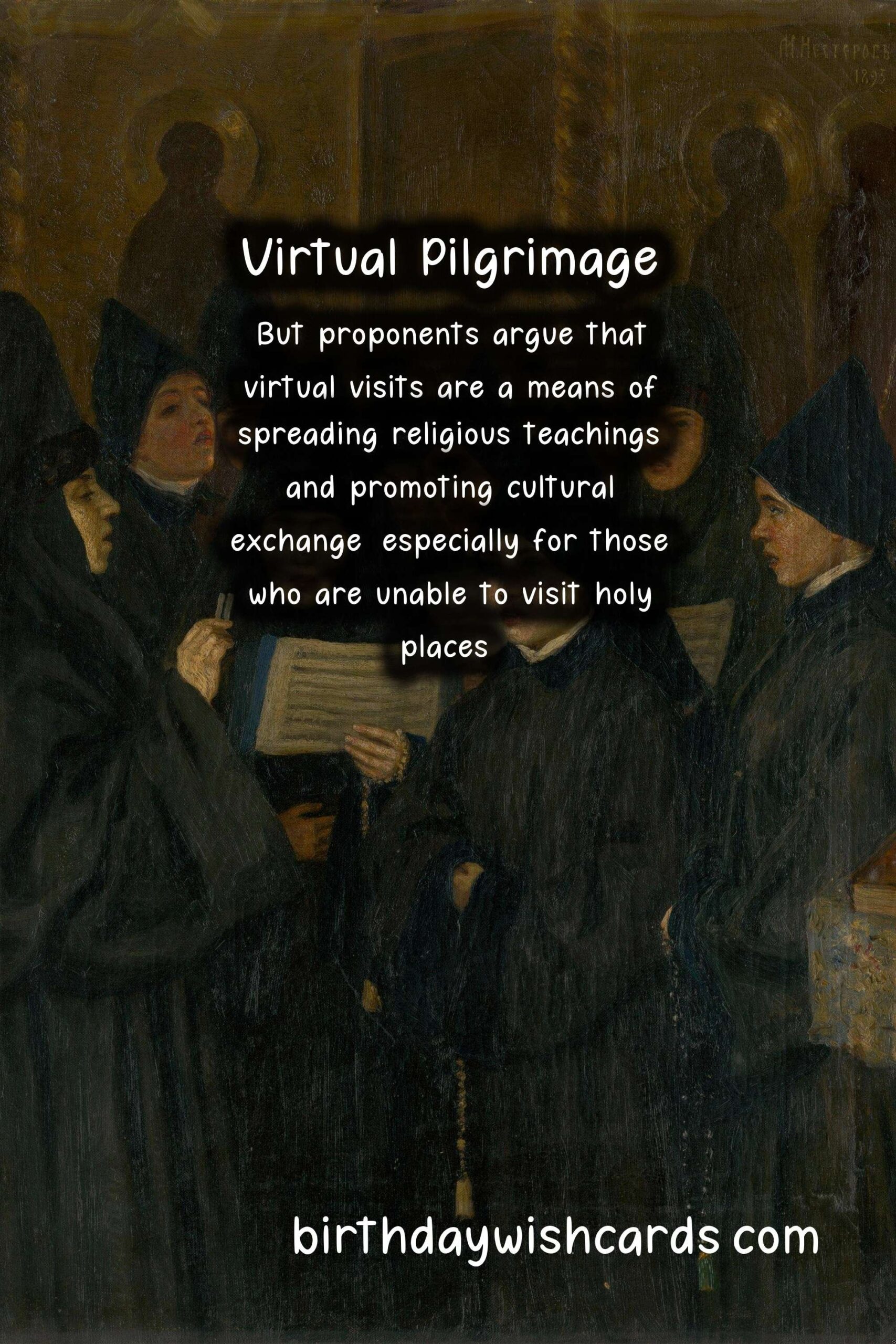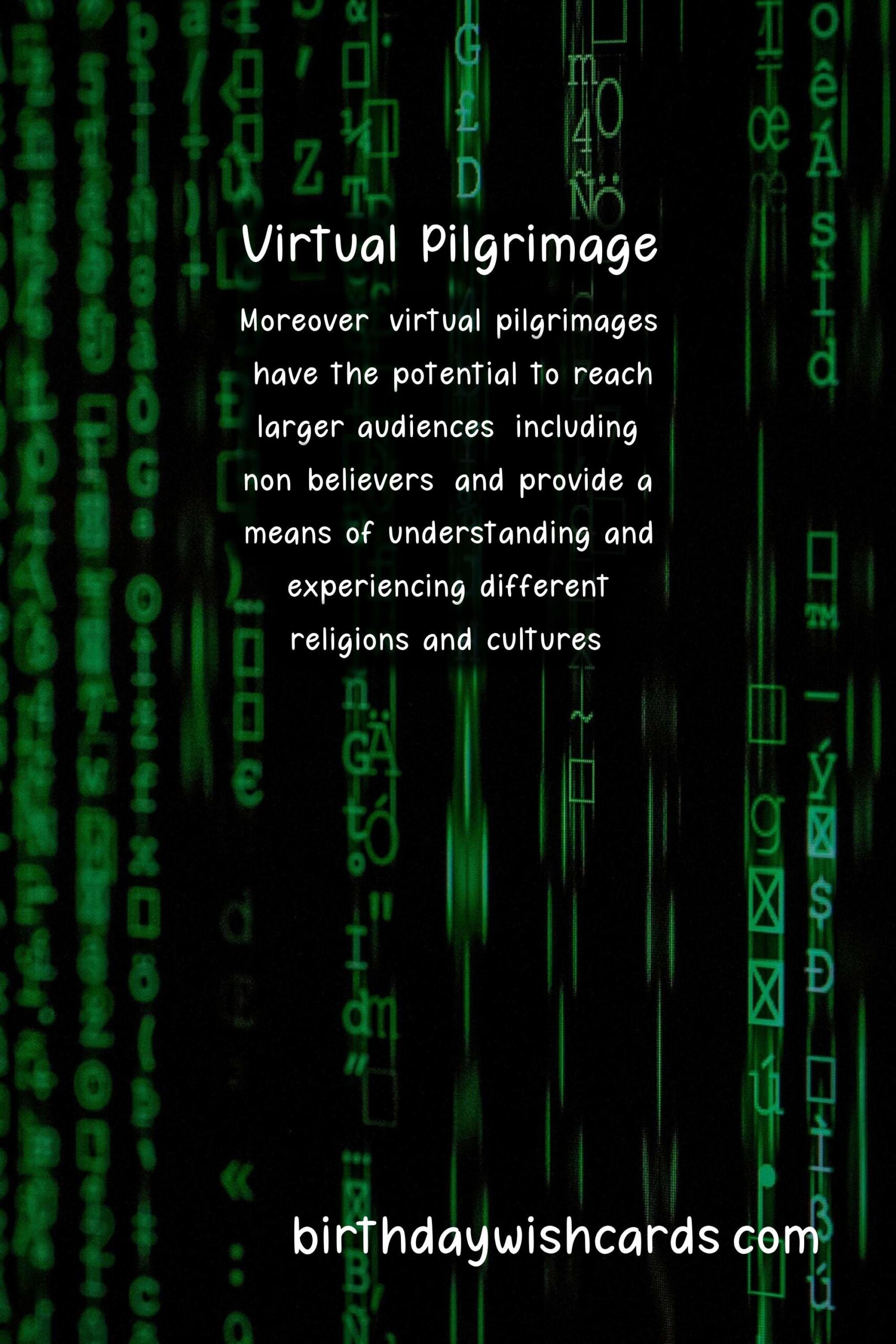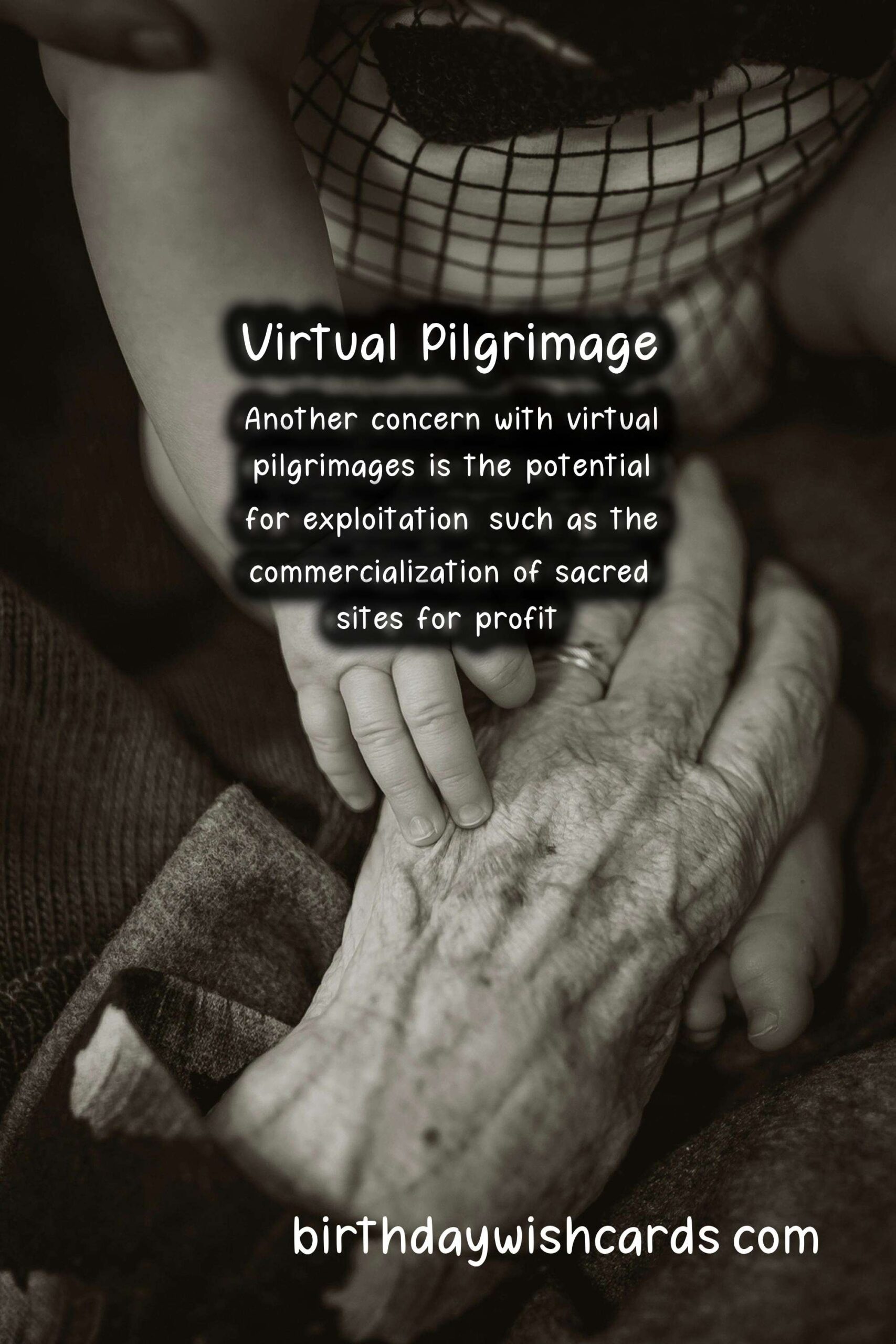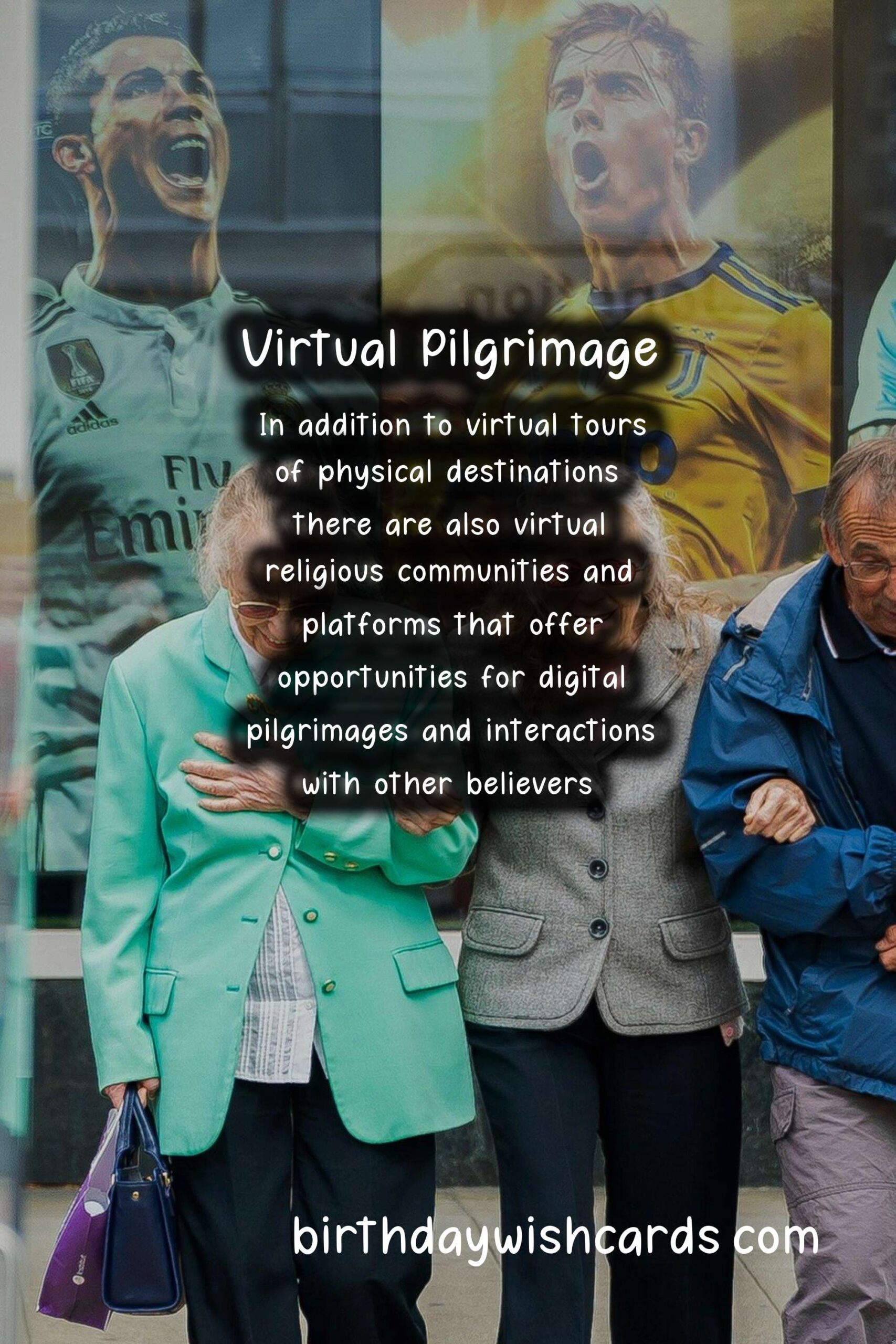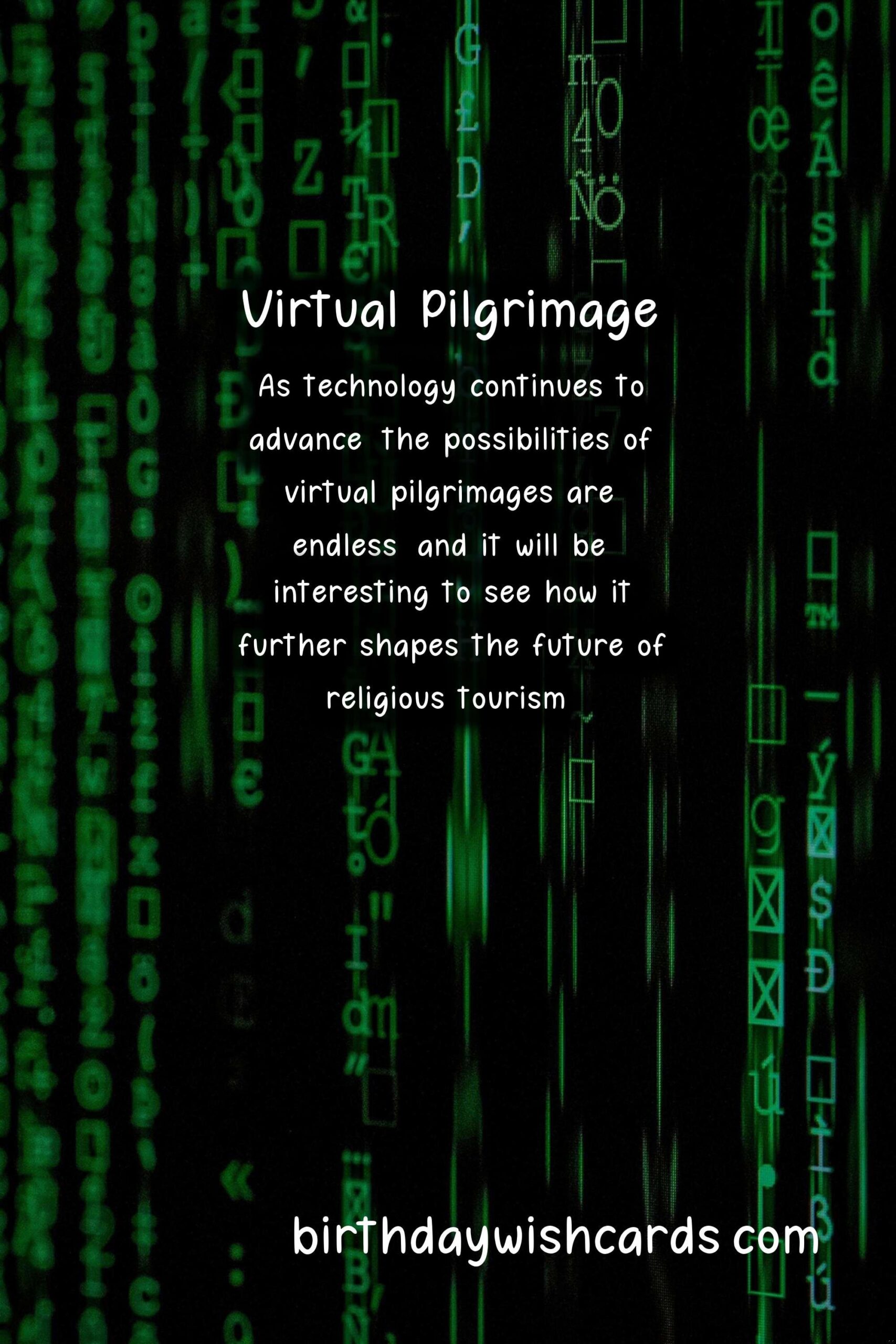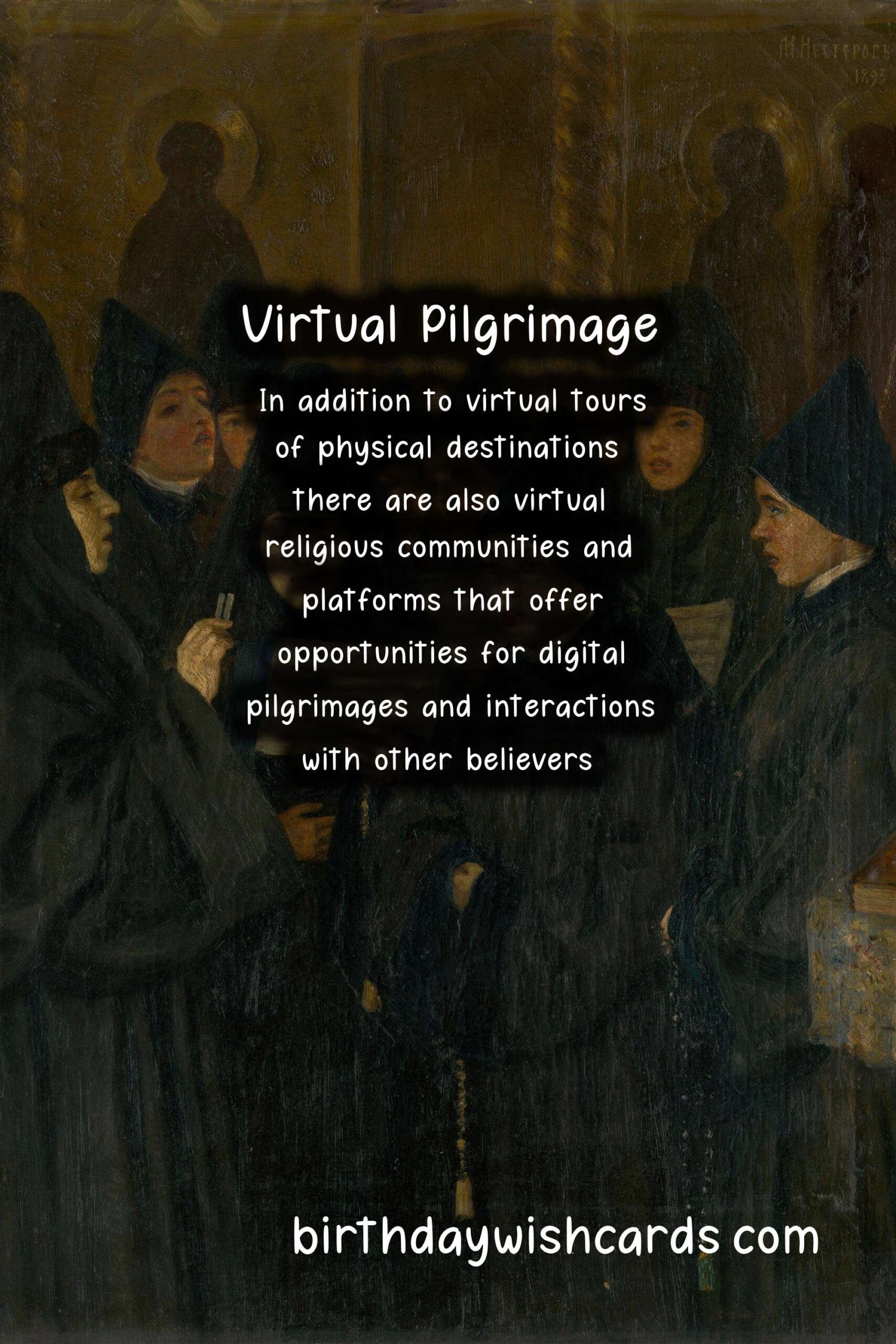 Religion and travel have a long-standing relationship, with religious tourism being one of the oldest forms of travel. From ancient times, people have embarked on pilgrimages to holy sites and sacred destinations in search of spiritual fulfillment and a deeper connection with their faith. In today’s digital age, this tradition has undergone a transformation with the emergence of virtual pilgrimages, giving believers the chance to experience holy places without leaving the comfort of their homes. This article will explore the concept of religious tourism in the digital age, and how virtual visits are shaping the modern religious experience. Pilgrimages have always been an integral part of many religions, with followers undertaking long journeys to visit significant religious sites. These trips are often seen as a way to deepen one’s faith, experience divine energy, and seek blessings from the holy destination. In the past, pilgrimages were limited to a select few due to the difficulty and cost of traveling to distant locations. However, with the advent of technology, the digital age has made it possible for people from all over the world to embark on a virtual pilgrimage. Virtual pilgrimages use virtual reality (VR) and 360-degree video technology to create immersive and interactive experiences of holy sites and destinations. These virtual tours can be accessed through various devices such as desktops, smartphones, and virtual reality headsets. One of the main advantages of virtual pilgrimages is that it allows people to visit multiple holy sites in a single session, something that would be physically impossible on a real-life pilgrimage. This has opened up a whole new world of religious tourism, making it accessible to those who may not have the means or ability to embark on physical pilgrimages. Virtual pilgrimages also offer a more convenient and cost-effective alternative, as they eliminate the need for travel expenses and can be accessed from the comfort of one’s home. Moreover, these virtual tours provide a safe and accessible option for individuals with physical limitations or health issues. But while virtual pilgrimages offer convenience and accessibility, they also raise questions about the authenticity and significance of a virtual experience compared to a real one. Critics argue that the physical journey and challenges involved in a pilgrimage are an essential part of the experience and can’t be replicated through virtual means. They also question the level of spiritual connection and the true sense of divine presence that one can feel through a screen. Another concern with virtual pilgrimages is the potential for exploitation, such as the commercialization of sacred sites for profit. But proponents argue that virtual visits are a means of spreading religious teachings and promoting cultural exchange, especially for those who are unable to visit holy places. Moreover, virtual pilgrimages have the potential to reach larger audiences, including non-believers, and provide a means of understanding and experiencing different religions and cultures. In addition to virtual tours of physical destinations, there are also virtual religious communities and platforms that offer opportunities for digital pilgrimages and interactions with other believers. For example, online prayers, virtual masses, and live streaming of religious ceremonies and festivals. These virtual communities not only provide a platform to connect with other believers but also allow for a more global and inclusive approach to religious tourism. As technology continues to advance, the possibilities of virtual pilgrimages are endless, and it will be interesting to see how it further shapes the future of religious tourism. While virtual pilgrimages are not a replacement for physical ones, they offer a complementary and alternative experience that can enhance one’s spiritual journey and understanding of various faiths and cultures.
Religion and travel have a long-standing relationship, with religious tourism being one of the oldest forms of travel. From ancient times, people have embarked on pilgrimages to holy sites and sacred destinations in search of spiritual fulfillment and a deeper connection with their faith. In today’s digital age, this tradition has undergone a transformation with the emergence of virtual pilgrimages, giving believers the chance to experience holy places without leaving the comfort of their homes. This article will explore the concept of religious tourism in the digital age, and how virtual visits are shaping the modern religious experience. Pilgrimages have always been an integral part of many religions, with followers undertaking long journeys to visit significant religious sites. These trips are often seen as a way to deepen one’s faith, experience divine energy, and seek blessings from the holy destination. In the past, pilgrimages were limited to a select few due to the difficulty and cost of traveling to distant locations. However, with the advent of technology, the digital age has made it possible for people from all over the world to embark on a virtual pilgrimage. Virtual pilgrimages use virtual reality (VR) and 360-degree video technology to create immersive and interactive experiences of holy sites and destinations. These virtual tours can be accessed through various devices such as desktops, smartphones, and virtual reality headsets. One of the main advantages of virtual pilgrimages is that it allows people to visit multiple holy sites in a single session, something that would be physically impossible on a real-life pilgrimage. This has opened up a whole new world of religious tourism, making it accessible to those who may not have the means or ability to embark on physical pilgrimages. Virtual pilgrimages also offer a more convenient and cost-effective alternative, as they eliminate the need for travel expenses and can be accessed from the comfort of one’s home. Moreover, these virtual tours provide a safe and accessible option for individuals with physical limitations or health issues. But while virtual pilgrimages offer convenience and accessibility, they also raise questions about the authenticity and significance of a virtual experience compared to a real one. Critics argue that the physical journey and challenges involved in a pilgrimage are an essential part of the experience and can’t be replicated through virtual means. They also question the level of spiritual connection and the true sense of divine presence that one can feel through a screen. Another concern with virtual pilgrimages is the potential for exploitation, such as the commercialization of sacred sites for profit. But proponents argue that virtual visits are a means of spreading religious teachings and promoting cultural exchange, especially for those who are unable to visit holy places. Moreover, virtual pilgrimages have the potential to reach larger audiences, including non-believers, and provide a means of understanding and experiencing different religions and cultures. In addition to virtual tours of physical destinations, there are also virtual religious communities and platforms that offer opportunities for digital pilgrimages and interactions with other believers. For example, online prayers, virtual masses, and live streaming of religious ceremonies and festivals. These virtual communities not only provide a platform to connect with other believers but also allow for a more global and inclusive approach to religious tourism. As technology continues to advance, the possibilities of virtual pilgrimages are endless, and it will be interesting to see how it further shapes the future of religious tourism. While virtual pilgrimages are not a replacement for physical ones, they offer a complementary and alternative experience that can enhance one’s spiritual journey and understanding of various faiths and cultures. 
